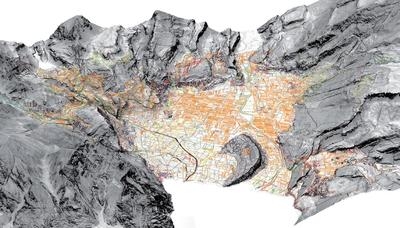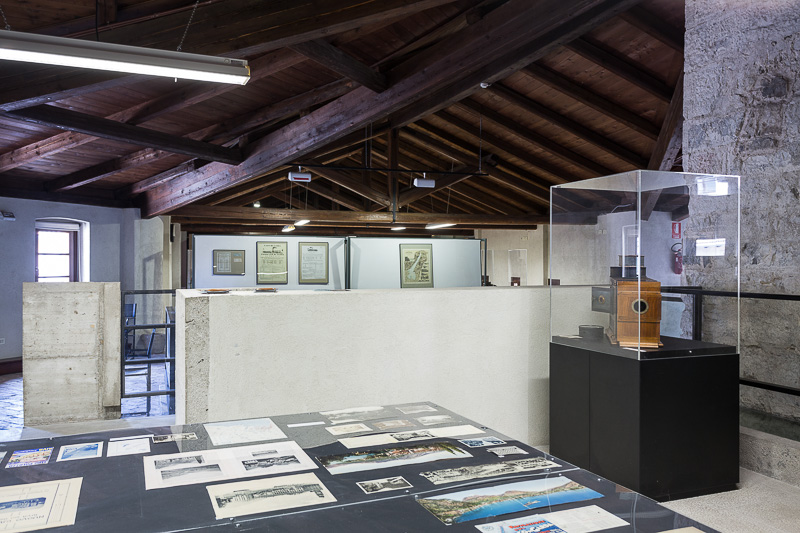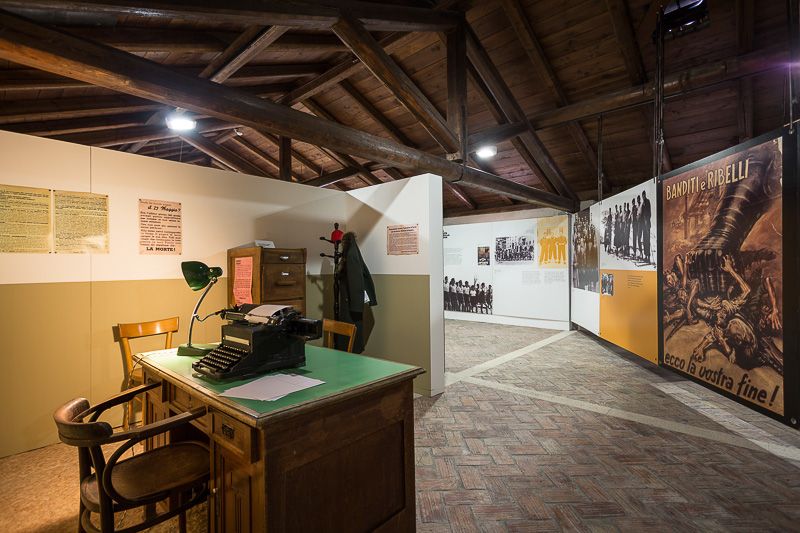History and territory: the Upper Garda from prehistory to modern time
 |
The itinerary started with the exhibition Historical landscapes and Sommolago settlement structures, from the pre-historical to the modern era. The age of Madruzzo |
|
 |
The railway The M.A.R. (Mori – Arco – Riva) railway was inaugurated on January 28th, 1891, after just 11 months of work. The M.A.R. line, a 24 km long section that took one hour and 30 minutes from end to end, used to join the station of Mori with Riva del Garda. The railway, built to boost the Upper Garda economy, was also important for the logistic needs of the strategically positioned Riva del Garda and of its forts in the years immediately prior to WWI. The line fell in disuse in 1936 and replaced with automobile services. The forts The Upper Garda area has the unique feature of having within its territory all kinds of permanent forts built by the Austro-Hungarian Empire between the mid 19th century and 1918. Following the two Risorgimento wars in 1848 and 1859, the Imperial Royal Austro-Hungarian army decided to fortify the Upper Garda area so as to defend its borders with the Kingdom of Italy. This project was launched with the construction of the San Nicolò and Nago forts. After the third war of independence in 1866, new forts were added: Sant'Alessandro in 1881-2, Batteria di Mezzo in 1900, Garda in 1907, Tombio in 1912. The Tagliata del Ponale fort, begun in 1904, continued to be expanded all through the Great War, until it ended. Tourism |
|
 |
The 20th century Starting in the first days of August 1914, the Austro-Hungarian army recalled to arms the able Trentino men in order to send them mostly to the oriental front, in Galicia. When Italy joined the war on May 24th, 1915, the Upper Garda found itself on the front line and, consequently, the imperial authorities ordered the evacuation of civilians from the Valle di Ledro valley and the Sarca plain all the way to Dro and Ceniga. The refugees were hosted in the Empire's regions, mainly Bohemia and Moravia. The Great War caused many problems to Upper Garda. On the one hand, the devastations caused by the conflict and, on the other, the changes occurred after its annexation to Italy. The military feat at the Dalmation port of Fiume, headed by Gabriele D'Annunzio, occurred between 1919 and 1920, the period that saw the beginning of the poet's relations with the so-called Sommolago, then continued with the building of the Vittoriale monument in Gardone according to the design of the Riva architect Giancarlo Maroni, who was put in charge of reconstructing Riva. Here, as elsewhere in Italy, the twenty year period of Fascism featured the suppression of freedom, in a climate imbibed in propaganda and rhetoric. In the attempt to improve the local economy, the eastern Gardesana was built in 1929, the western Gardesana in 1931 and the port of San Nicolò in 1938. During WWII and until September 8th, 1943, the history of Lake Garda coincided with that of the rest of the nation. After September 8th, 1943, Trentino was declared Operational Area of the Prealps (Alpenvorland) and was preannexed to Nazi Germany. Upper Garda was the stage of one of the most important episodes of Trentino resistance: on June 28th, 1944 the Nazis assassinated 11 partisans and arrested several dozens of them. The exhibition Achtung Banditen! explains this espisode. On April 30th, 1945 the area was freed by groups of partisans and citizens who revolted a short while before the arrival of the allies. |
|




